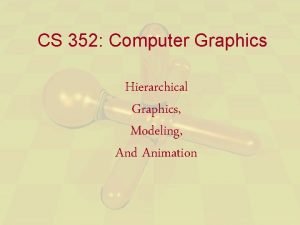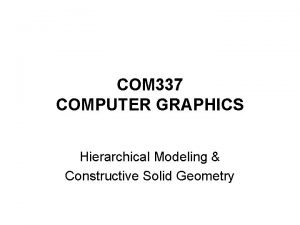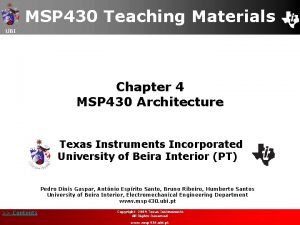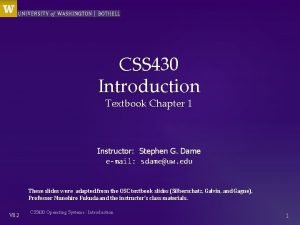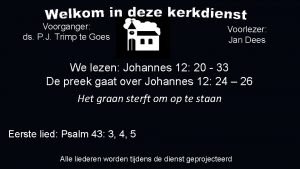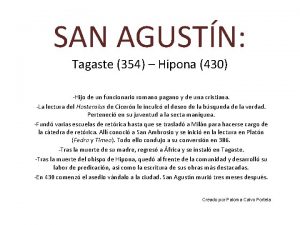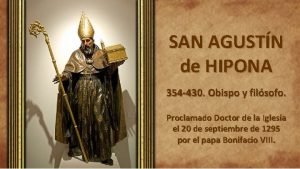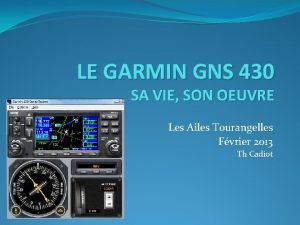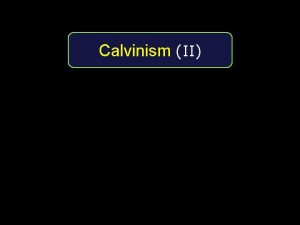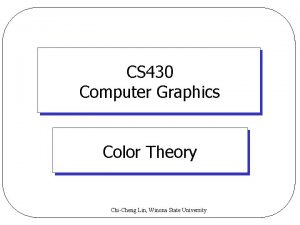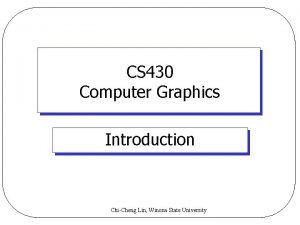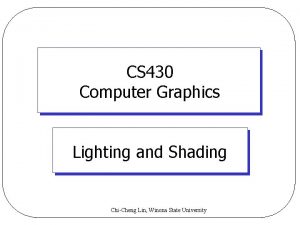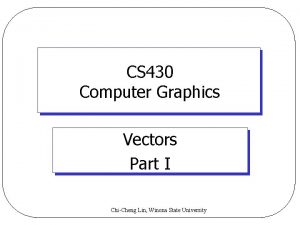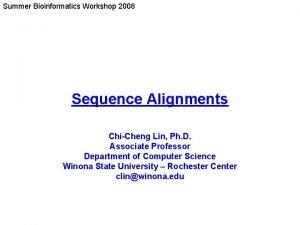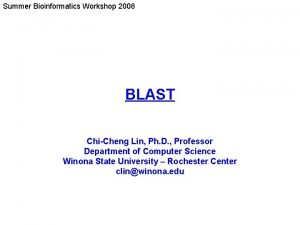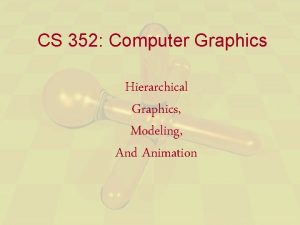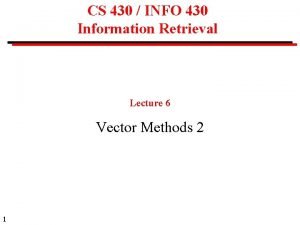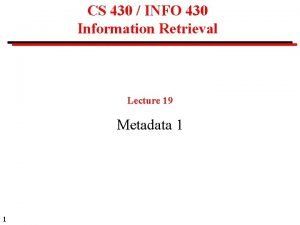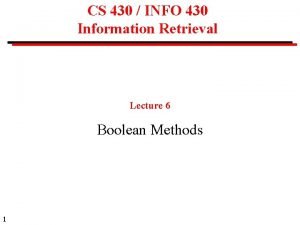CS 430 Computer Graphics Hierarchical Graphics ChiCheng Lin

















- Slides: 17

CS 430 Computer Graphics Hierarchical Graphics Chi-Cheng Lin, Winona State University

Topics Hierarchical Geometric Models l Graphics Client and Server l Graphics Package Modes l Display List in Open. GL l 2

Hierarchical Geometric Models l Model z. Representation of some (of all) features of a concrete or abstract entity z. Purposes y. Visualization and understanding of structures or behavior of an entity y. Experimentation with and prediction of effects of inputs or changes to the model l Models in computer graphics z. Organizational models z. Quantitative models z. Geometric models 3

Hierarchical Geometric Models l Geometric model z. Collection of components with well-defined geometry and interconnections between components z. Representation of y. Spatial layout, shape, appearance y. Connectivity of components y. Application-specific data values and properties 4

Hierarchical Geometric Models l Purpose of hierarchy z. Modularization z. Storage economy z. Update propagation l Hierarchy in geometric modeling z. Complex objects can be built using application-specific atomic components z. Symbolized by various tree structures or DAG (Directed Acyclic Graph) z. Parent calls child and passes geometric parameters to child 5

Hierarchical Geometric Models l Example Tree robot upper. Body leg DAG robot S upper. Body leg arm arm hand 6

Hierarchical Geometric Models Child-sibling tree (a binary tree) is used to represent the tree hierarchy l Preorder traversal is used for rendering l Example: robot // l upper. Body arm leg // // hand // 7

Graphics Client and Server l Client z. Host computer running graphics programs l Server z. Workstation with a raster display, a keyboard, and pointing device z. Provides output services on its display z. Provides input services through the keyboard and pointing device z. Services potentially are available to client anywhere on the network 8

Graphics Package Modes l Immediate mode z. As soon as a statement that defines a primitive is executed, the primitive is displayed immediately z. Keeps no record of primitives and attributes in memory z. Client computes and passes data to server 9

Graphics Package Modes l Retained mode z. Define an object once and put its description in a display list z. Display list is stored (cached) in the server and redisplayed by a function call issued from client to server 10

Graphics Package Modes l Advantages of retained mode z. Computation is reduced z. Network traffic is reduced z. Performance could be optimized, e. g. , y. Client: good numerical-processing computer y. Server: special-purpose graphics computer l Disadvantages of retained mode z. Extra server memory required z. Overhead in creating and maintaining display lists z. Not practical for applications with high dynamics 11

Graphics Package Modes Some graphics packages support only one of the modes, some supports both mode l Both modes are supported in Open. GL l z. Immediate mode is what we’ve been using z. Retained mode: display list 12

Display List in Open. GL l Define a display list of an upright, centralized, red cylinder GLuint my. Cylinder; my. Cylinder = gl. Gen. Lists(1) Compile and store, but don’t execute if (my. Cylinder != 0) { gl. New. List(my. Cylinder, GL_COMPILE); red. Cylinder(1. 0, 2. 0, 10, 8); gl. End. List(); } l Call (execute) a display list (e. g. , indisplay()) gl. Call. List(my. Cylinder); 13

Display List in Open. GL l Definition of a red cylinder GLUquadric. Obj *qobj; qobj = glu. New. Quadric(); glu. Quadric. Draw. Style(qobj, GLU_LINE); static void red. Cylinder(GLdouble b, GLdouble t, GLdouble h, GLint slc, GLint stk) { gl. Color 3 f(1. 0, 1. 0); gl. Rotated(-90. 0, 1. 0, 0. 0); gl. Translated(0, 0, -h/2); glu. Cylinder(qobj, b, t, h, slc, stk); } 14

Display List in Open. GL l Problem z. The state (e. g. , color and transformation matrix) might be changed by a display list l Solution: save/restore state z. At the beginning of a display list gl. Push. Matrix(); gl. Push. Attrib(GL_ALL_ATTRIB_BITS); z. At the end of a display list gl. Pop. Attrib(); gl. Pop. Matrix(); 15

Hierarchical Display Lists A list can call another list l Example l zgl. New. List(bike, GL_COMPILE); gl. Call. List(body); gl. Translated(-0. 5, 0, 0); gl. Call. List(wheel); gl. Translated(1. 0, 0, 0); gl. Call. List(wheel); gl. End. List(); 16

Display List in Open. GL l Once a display list is created it cannot be modified* z. E. g. , if you are going to rotate a wheel independently, do not include it in the list z. Inflexible, but efficient z. Use a display list for an atomic object l Matrix operations, lighting models, material properties, textures, patterns, may also be optimized using display list 17
 Computer graphics
Computer graphics Hierarchical modeling in computer graphics
Hierarchical modeling in computer graphics Graphics monitors and workstations
Graphics monitors and workstations Computer graphics introduction ppt
Computer graphics introduction ppt Csci 530 security systems
Csci 530 security systems 430 anos de silêncio
430 anos de silêncio Msp 430 architecture
Msp 430 architecture 430$ ile to zł
430$ ile to zł Css 430
Css 430 Opwekking 430
Opwekking 430 430
430 354
354 Garmin gns 430
Garmin gns 430 Power log 430-ii
Power log 430-ii Csce 430 tamu
Csce 430 tamu Info 430
Info 430 430 i
430 i Informe técnico 1466-2017-servir-gpgsc
Informe técnico 1466-2017-servir-gpgsc
